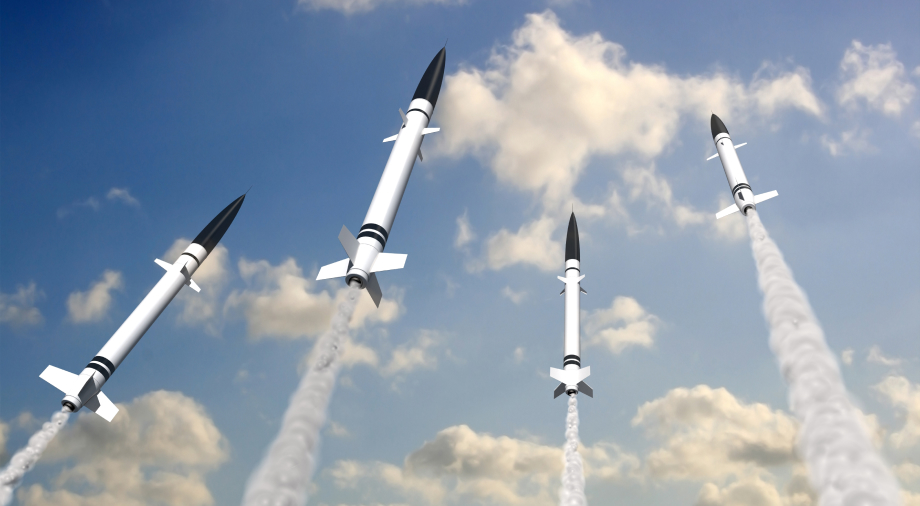In our first installment, we talked about how reconnaissance satellites first appeared in the late 50s. Just a few years later, satellite navigation systems began to function. The most advanced version of them, GPS, allowed the United States and its allies to achieve victory in the First Gulf War in four days.
However, in order to fully unlock the military potential of satellites, it was not enough just to put them into orbit and put them to work. First of all, it was necessary to think about ensuring the safety of such a valuable orbital resource, and thus to organize the protection of military satellites. This has led to defense doctrines to be used in possible future space conflicts.
Anti-satellite warfare and countermeasures
In anticipation of potential military conflicts with adversaries possessing satellite navigation systems and reconnaissance and communications satellites, the US military began developing ASAT (anti-satellite) weapons, which use missiles to take out enemy space assets. Many US positions on this issue are described in the Anti-Satellite Operations Doctrine, published by the United States Air Force (USAF) in 2004.
In the second half of the 20th century, other states of the world began to develop their own types of anti-satellite weapons, in particular the USSR and the People’s Republic of China, whose foreign policy for many reasons diverged from the views of Washington. Surface-to-space ballistic missiles could, in theory, deprive the US military of critical navigation and communications capacities.
The US is becoming increasingly proactive in protecting its military satellites. It is thus developing a number of defensive activities, strict adherence to which is expected to protect satellites in orbit. Let’s consider each of them in order.
Hide from prying eyes
The best way to protect satellites in orbit is to prevent them from being found by the enemy in the first place. For this, measures are used to counteract detection. Satellite designers reduce the radar, visual, and infrared signatures emanating from the satellite. The first “invisible satellite”, launched into orbit in 1976, was called the LES-8. The probe was powered by nuclear engines and had no solar panels at all, which made it virtually impossible to detect visually in geostationary Earth orbit.
In addition to being visible, satellites also emit an electronic signature, which can be detected by radar. In the United States, there were concepts of spy satellites for the MISTY program, which were supposed to be equipped with an anti-radar coating. The main functional components of the satellite were concealed behind a large cone-shaped tip, directed down towards the Earth. This deflected microwave radar and infrared waves which hit its surface. The cone was not a static structural element, but rather an inflatable balloon, which turned around after MISTY entered orbit.
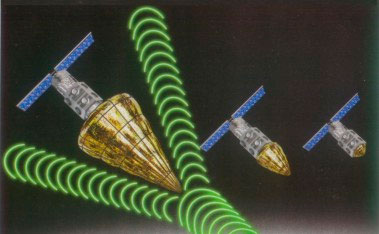
source: satelliteobservation.net
The development of the MISTY satellites was overseen by the US National Reconnaissance Office (NRO), and for obvious reasons, it was kept in the strictest secrecy. It is not known for certain whether the aforementioned anti-radar coating was present on two MISTY program satellites launched in 1990 and 1999. With or without it, during the first MISTY launch, the Americans were able to hide the traces of their spy satellite in orbit by resorting to another trick.
Six days after launching their satellite into orbit, the Americans simulated an explosion, which was described by official press releases as a failure of a satellite mission, which was readily believed by both the American media and Soviet intelligence. In reality, MISTY made a number of orbital maneuvers, one of which was the passage near a cloud of space junk, to simulate a disaster and pass them off as its own. Perhaps it was at this time that MISTY managed to deploy its anti-radar shield and safely escape from the field of view of terrestrial observers.
NRO had also planned to launch a third MISTY satellite in 2009. However, funding for the $9.5 billion project (adjusted for 2021 inflation – $13.6 billion) would be officially stopped. We will most likely only learn about the results of the work of invisible satellites and the design features of MISTY after the project is one day declassified.
Avoiding surveillance
If a military satellite is detected despite countermeasures, the next step in the protection protocol is to counteract tracking. One of the most effective ways to do this is to use radar-jamming antennas, which are pointed at the sensors on Earth that track a satellite’s movements.
However, to jam a transmitter on Earth, one must first know its exact location. For this, radar warning receivers are used, similar to those installed on jet fighters. A similar system called AN / ASQ-239 is present on the US’s fifth generation multi-role fighter, the F-35.
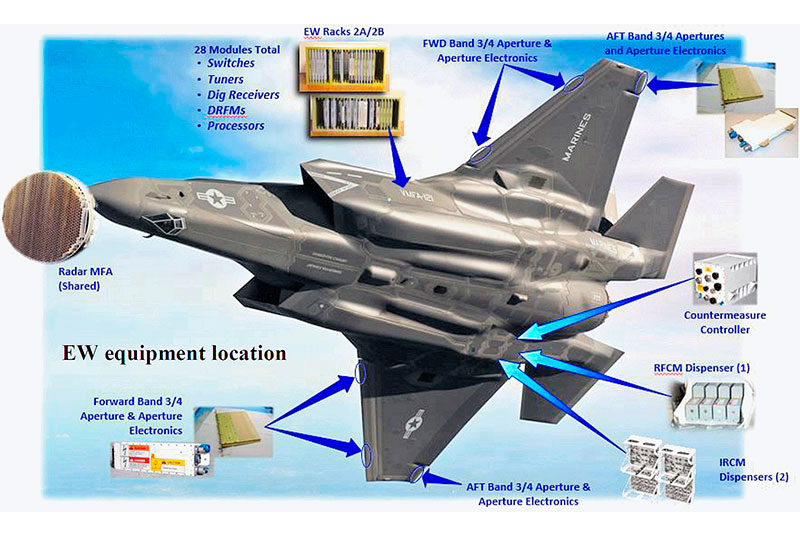
source: www.armadainternational.com
The system detects radio exposure from terrestrial tracking and is able to pinpoint the exact location of the radar station doing the tracking. Next, radar suppression devices muffle the radar signal with interference.
Another means of countering satellite tracking is to use SIGNIT (signals intelligence) satellites. These allow for the orbital collection and analysis of electronic signatures that help to localize electronic warfare ground stations, namely stationary and mobile radar antennas.

source: www.globalsecurity.org
In addition to tracking signals and trying to jam radar stations that track them on Earth, once detected, military satellites may attempt an orbital evasive maneuver. While changing orbital trajectory is a very effective means for a satellite to escape enemy detection and surveillance, it is highly limited by the very small fuel reserves which today’s satellites possess. In the future, new types of ion engines are likely to fully unlock the potential of orbital evasive maneuvers.
Safe distance
Another solution to protect military satellites is to use cover tactics, by which a spacecraft hides behind civilian probes of third parties not involved in the conflict.
Similar precedents have already happened in recent history. On June 3, 2017, the American spy satellite USA-276 within only 6.4 km of the ISS and performed a series of orbital maneuvers, dangerously approaching the station several times.
This game is quite dirty, because a military satellite executing these maneuvers actually takes another spacecraft “hostage,” while the occupants of the other spacecraft may not even be aware of the potential danger. Therefore, such maneuvers are usually considered only in theory, and they are substituted by political efforts. Thus, a clear statement at the highest diplomatic level about a symmetrical response to the use of anti-satellite weapons can cool the hotheads who want to use them.
Of course, this tactic will not work in the hot phase of a future space conflict. Once the anti-satellite missiles are on target and launched, diplomacy will no longer be enough.
ASAT jamming and decoy traps
It is important to understand that anti-satellite weapons face an extremely difficult task, since military satellites move at high speed, and their newest generations are also relatively small. That is why, even knowing the exact trajectory of the spy satellite in orbit, an anti-satellite ballistic missile requires a targeting sensor to accomplish its mission. Its data helps the missile to steer at the moment of approach to its target and provide a higher accuracy.
This, of course, means that satellites can take counter-targeting measures, which at an early stage consist of activating the Missile Launch Detection System (MILDS) if it uses infrared frequencies for guidance. This technology is in service with the latest-generation combat jets and can save them just seconds before a missile is set to hit by blinding the missile and deflecting its trajectory. The blinding of infrared ASAT missiles is carried out using satellite-mounted jammers, which direct a laser beam at the missile’s guidance head, causing it to lose its ability to track its target.
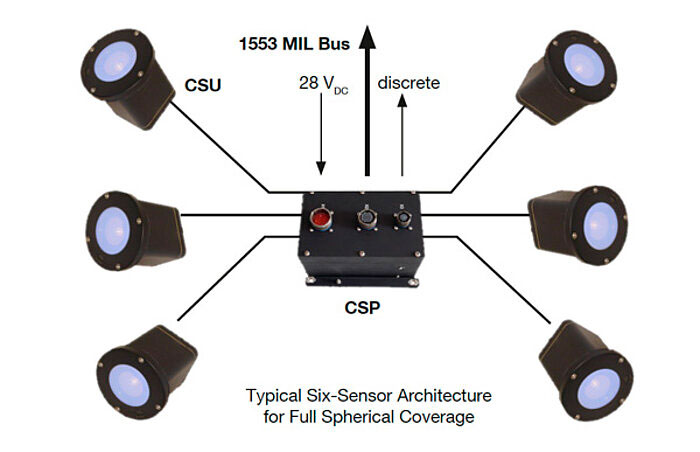
source: www.hensoldt.net
If an anti-satellite missile has an electronic guidance system, then it can be countered with electronic warfare (EW) measures similar to those used on Earth.
Another likely solution to deceive an anti-satellite missile would be to deploy decoys from a military satellite to confuse the missile, forcing it to choose which target to hit. You have probably seen how decoy flares work to protect warplanes, but in space, more innovative solutions will be required, in particular the use of ultralight decoys, in order to save precious payload space. These decoys can be stored on the satellite folded up, and then rapidly unfold upon deployment.
The last (but no less sophisticated) way to repel an ASAT missile strike is to deploy a kind of “smoke screen” between the missile and the satellite, which will hide the satellite’s infrared and radio signatures. The USSR began developing something similar at the dawn of the 70s with their Almaz project, and it is possible that the Russians retain some variations of it today. The satellite would release a cloud of carbon nanoparticles which could block the radio waves being used to target them. The protective system was called Dymka (or “haze”). However, the Soviets had no way of knowing how well it would be able to counteract the radio signature of American ASAT missiles, since their intelligence had no data on the frequencies on which the American missiles operated.
This article describes only some of the systems for deceiving ASAT missiles and disrupting their targeting. To operate reliable anti-missile defense for a military satellite, there must be a whole complex of countermeasures. This, in turn, imposes limitations, since putting all of these missile countermeasures systems onto a satellite would require either increasing its size or sacrificing its reconnaissance or radio equipment. One good solution would be to use an independent constellation of STSS (Space Tracking and Surveillance System) satellites for tracking missile launches, similar to those that operate as part of the American SBIRS (Space-Based Infrared System) developed by Northrop Grumman.
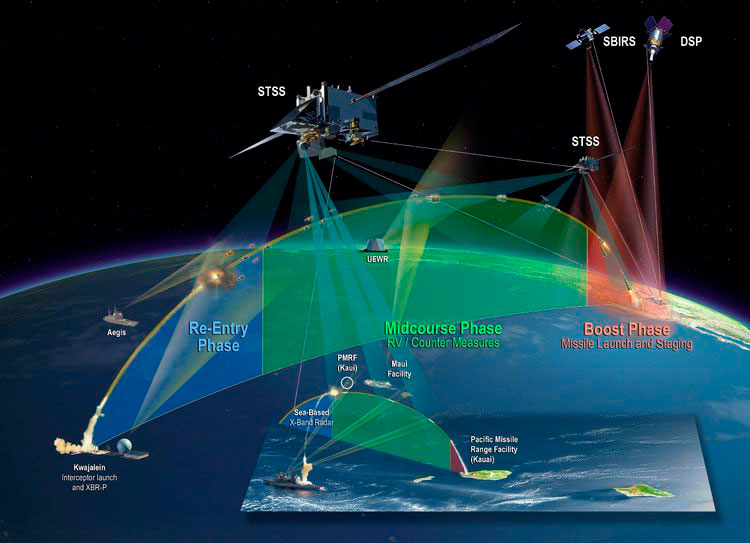
source: s3.amazonaws.com
Hit, but not destroyed
Even with extensive defenses, it will never be possible to provide 100% safety to satellites in orbit. On top of that, ASAT missiles are constantly improving, and countermeasures can only try to keep up.
Therefore, modern space doctrines being developed at the Pentagon rely on having a massive presence of military satellites in orbit. When there is a constellation of satellites operating as a single entity, but located at a considerable distance from each other, even the destruction of several of them will not be able to disable the function of the entire constellation.
Another significant advantage of satellite constellations is the significant savings in the funds required for their production and launch. The small size of modern cubesats and nanosatellites makes it possible to put dozens of spacecraft into orbit in a single launch (the clear champion here is SpaceX, which, using its Falcon 9, can launch up to 54 of its Starlink telecommunications satellites). The smaller size of satellites also makes them less vulnerable to anti-satellite missiles.
The Ukraine experience: on the threshold of peace
As noted in the previous article, the war in Ukraine in 2022 has been the first military conflict in which satellites have been used to meet all the critical needs for the front, in particular encrypted satellite communications (Starlink) and satellite intelligence.
Acquired with the support of the charitable foundation of Sergey Prytula and Ukrainian businessman Max Polyakov (owner of EOS Data Analytics), the Finnish ICEYE SAR monitoring satellite managed to pay itself off almost immediately after being activated. In only two days, it located more than 60 units of Russian equipment, which were subsequently destroyed or captured by the Ukrainian Armed Forces. Information about this was published by the Ukrainian Minister of Defense Oleksiy Reznikov on his Facebook.

source: finance.ua
Marielle Borowitz, associate professor of international relations at Georgia Tech, predicts that the presence of private monitoring satellite companies in orbit will only increase in the future. This growth has been ongoing since 2015, and the war in Ukraine has only confirmed the need to develop this sector in order to help democratic societies counteract new forms of totalitarian aggression.
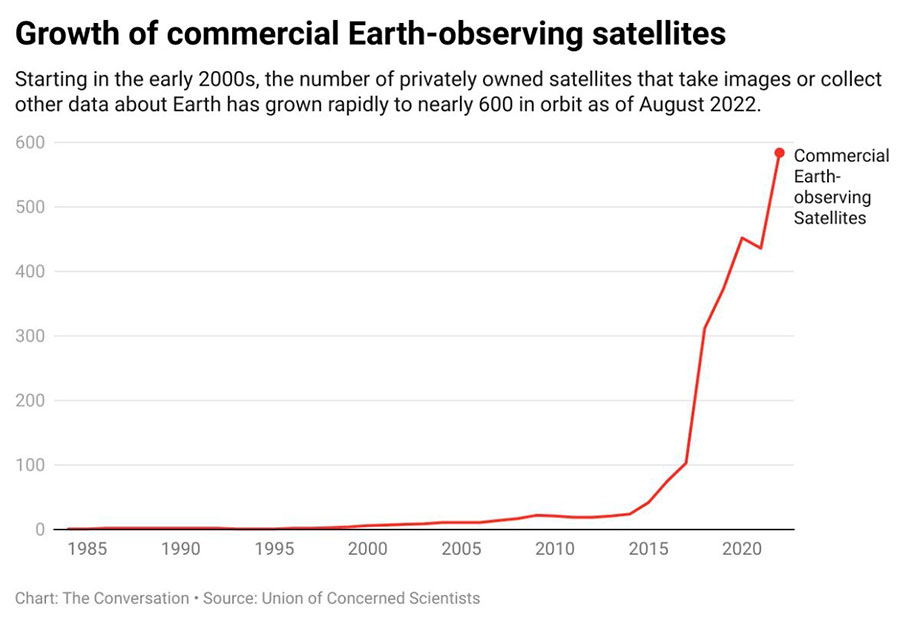
source: cdn.mos.cms.futurecdn.net
Today, a number of private monitoring satellite companies, on their own initiative, are providing intelligence assistance to Ukraine. Once this conflict ends, they will also be able to support peacekeeping missions, including:
- verifying compliance with international treaties, in particular disarmament treaties;
- monitoring conflict regions and assessing where destruction is happening;
- facilitating the conduct of future UN and OSCE peacekeeping missions.
On this issue, a clearly formulated regulatory regime on the operation of such satellites by all members of the international community will be needed in order to prevent the leakage of important intelligence data that parties to a conflict can use to their advantage. Of course, we are talking only about those countries whose policies can be trusted – it is hardly possible in the current circumstances to imagine a situation where Russia, which violates all norms of international law, or the dictatorial regime of the DPRK, would be allowed to access such data.
Despite the fact that the war in Ukraine has been the first full-scale war in which satellites have been used in full force, it is important to understand that that space will not always be used for violent aims. Just as the atomic bombs that once destroyed Hiroshima and Nagasaki were followed up by nuclear power plants which have managed to provide for the full energy needs of a number of countries, so military satellites today will pave the road for new civilian applications that will serve humanity in peace.


